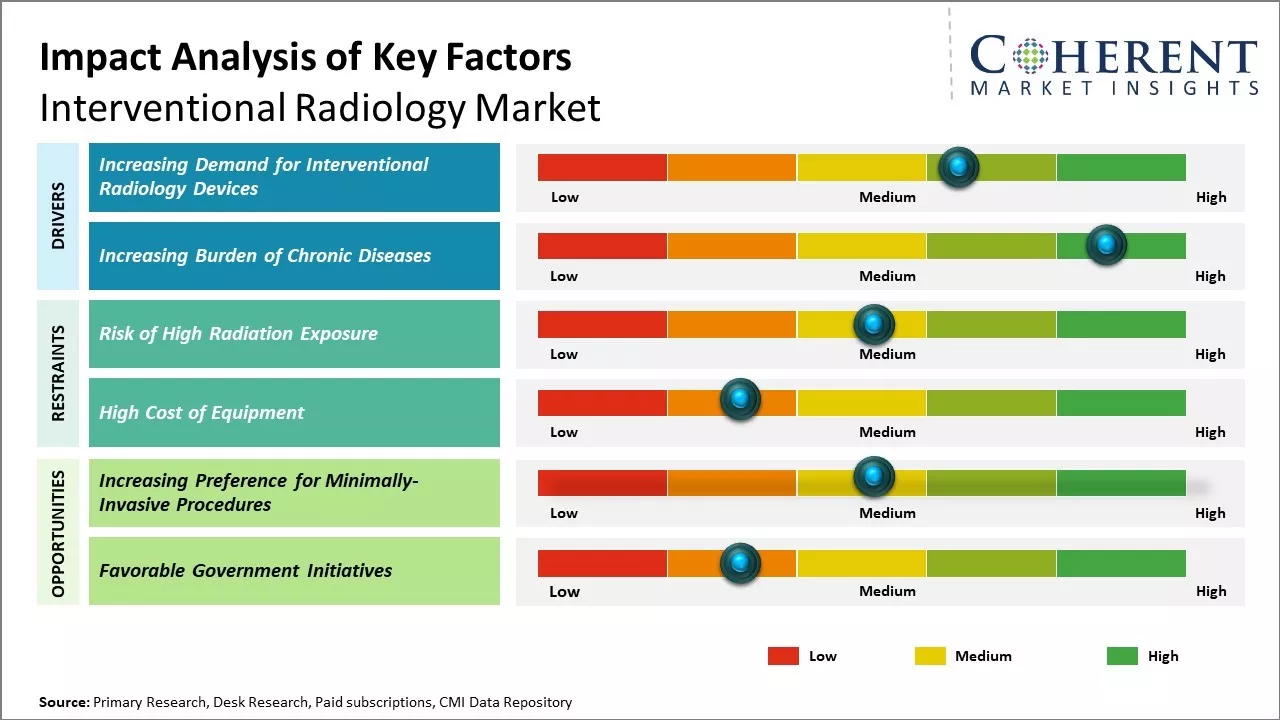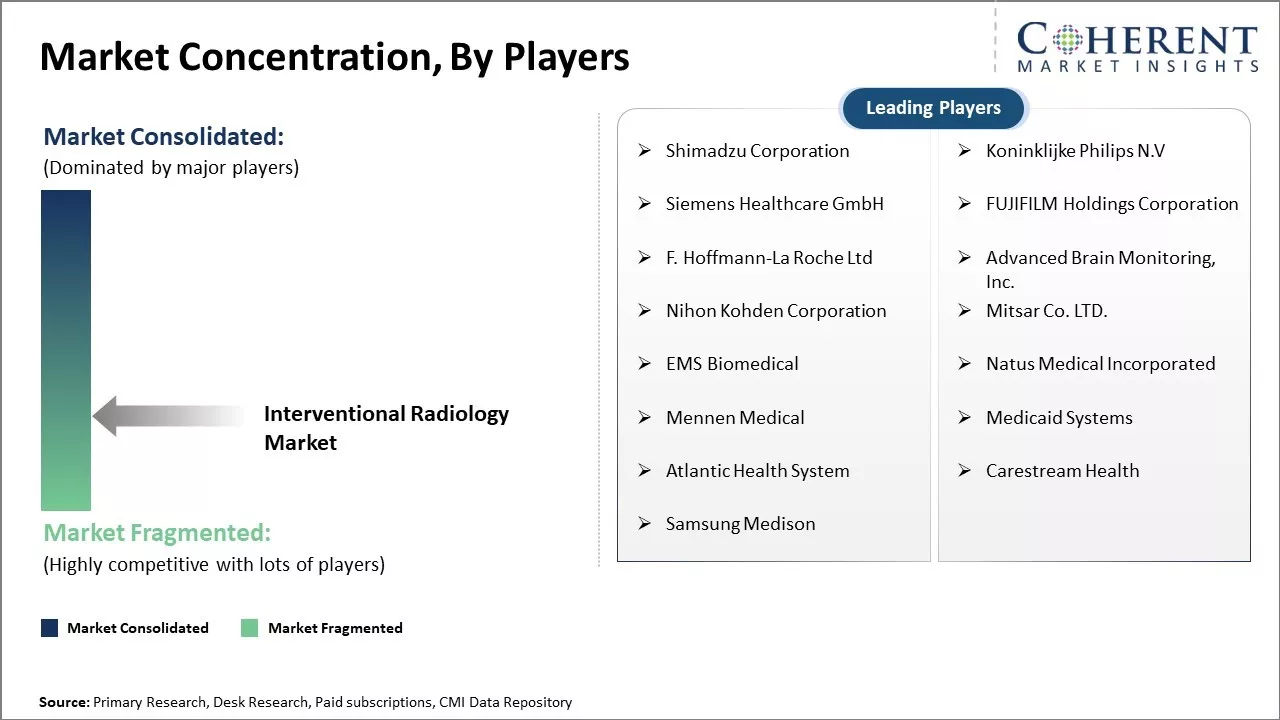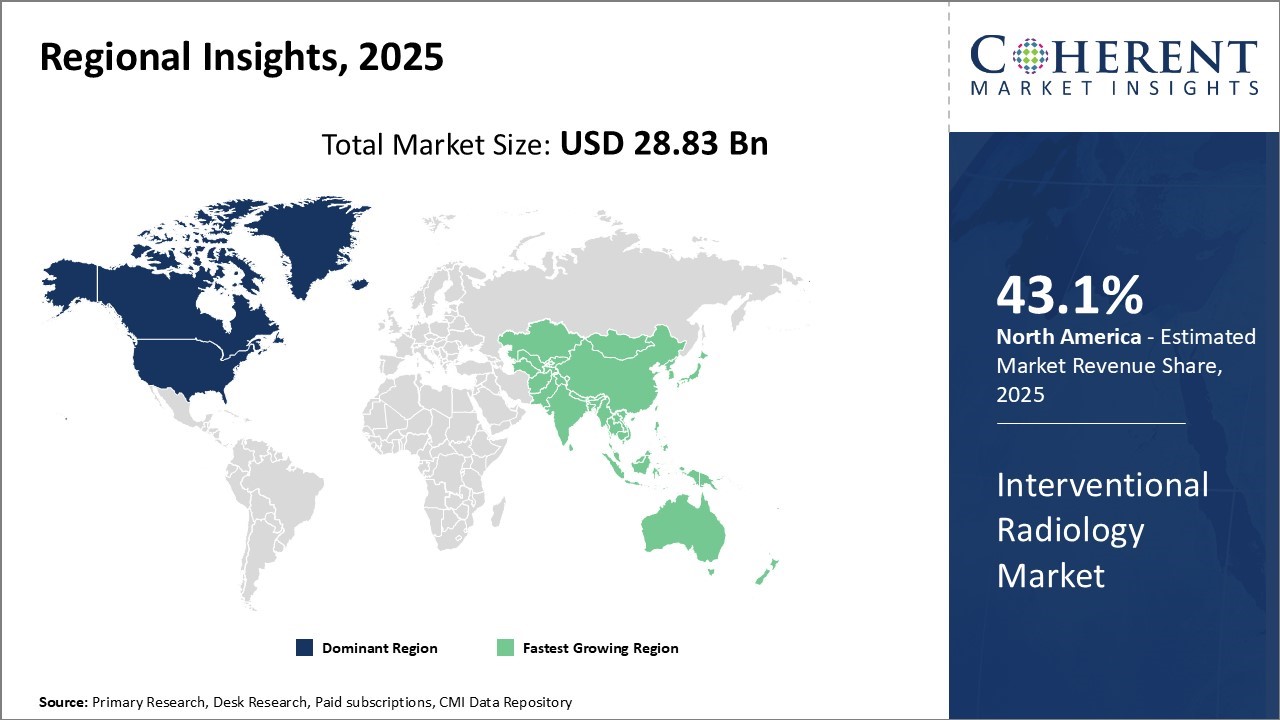The Global Interventional Radiology Market size is estimated to be valued at USD 28.83 Bn in 2025 and is expected to reach USD 46.03 Bn by 2032, exhibiting a compound annual growth rate (CAGR) of 6.9% from 2025 to 2032.

To learn more about this report, Download Free Sample
The Global interventional radiology market forecast is witnessing positive growth trends over the past few years. There has been a steady rise in the demand for minimally invasive procedures for the treatment of various diseases. Advancements in image-guided technology and the development of novel embolic agents, catheters, and guidewires are helping interventional radiologists to treat conditions that were traditionally managed surgically. Furthermore, the rising geriatric population prone to chronic diseases and the increasing healthcare expenditure in developing nations are some of the key factors driving the demand for interventional radiology procedures worldwide.
|
Event |
Description and Impact |
|
Regulatory and Reimbursement Shifts |
|
|
Emerging Market Access and Equity |
|
|
Regional Healthcare Investments |
|
Uncover macros and micros vetted on 75+ parameters: Get instant access to report

To learn more about this report, Download Free Sample
Increasing demand for interventional radiology devices is expected to propel the growth of the global interventional radiology market over the forecast period. Interventional radiology (IR) is a way to diagnose and treat a variety of chronic disorders without major surgery, and thus, there is an increasing demand for IR devices. In December 2020, Samsung Electronics Co. Ltd., an electronics company, launched its premium diagnostic imaging solutions in ultrasound, digital radiography, and mobile computed tomography at the Radiological Society of North America (RSNA) 2020, to expand its product portfolio in the interventional radiology market.
Increasing burden of chronic diseases, such as cancer, is expected to boost the growth of the global interventional radiology market during the forecast period. For instance, interventional radiology uses imaging techniques, such as real-time X-rays, computed tomography, ultrasound, or magnetic resonance imaging, to guide treatments right to the cancer site.
According to the National Cancer Institute, the number of new cancer cases per year is expected to rise to 29.5 million and the number of cancer-related deaths to 16.4 million by 2040. Thus, with the increasing prevalence of cancer, the use of IR devices is also expected to increase at a rapid pace.
Increasing preference for minimally-invasive procedures is expected to provide significant growth opportunities for players in the global interventional radiology market. For instance, the concept behind interventional radiology is to diagnose and treat patients using minimally-invasive techniques to improve health outcomes.
In April 2021, Genesis MedTech, a medical device company, announced the launch of the novel laparoscopic technology, allowing physicians to conduct minimally invasive surgery instead of open surgery to reduce risk of patients and enhance recovery time.
The product segment includes MRI systems, ultrasound imaging systems, CT scanners, angiography systems, fluoroscopy systems, biopsy devices, and others. The MRI systems sub-segment is estimated to hold 36.3% of the Interventional Radiology Market share in 2025 owing to its advanced capabilities. MRI provides excellent soft tissue contrast resolution without using ionizing radiation like CT or fluoroscopy. This makes MRI the preferred imaging modality for a variety of interventional procedures.
MRI also has the key advantage of multidirectional imaging which allows physicians to visualize tissues and pathologies from any angle during a procedure for precise guidance. Recent innovations have further enhanced MRI's clinical value for interventional applications. Open architecture platforms now integrate advanced visualization tools that offer real-time imaging and 3D reconstruction of target anatomies.
This level of anatomical detail helps interventional radiologists more accurately navigate devices and place implants or perform biopsies of small lesions that were previously difficult to target. Upgraded coils and coils arrays also provide higher resolution images, enabling interventional procedures in smaller or more complex regions of the body.
As technology advances, MRI is poised to take on an even greater role across more areas of interventional radiology. Its superior tissue imaging without ionizing radiation will continue attracting clinicians as they develop new minimally invasive techniques. This expanding scope along with ongoing enhancements in capabilities explains the strong and growing demand for MRI systems in the global interventional radiology marketplace.
The application segment includes cardiology, urology, nephrology, oncology, gastroenterology, and others. The cardiology sub-segment is estimated to hold 32.1% of the Interventional Radiology Market demand share in 2025. This segment encompasses a wide range of minimally-invasive diagnostic and treatment procedures performed using image guidance to access the cardiovascular system.
The rising worldwide prevalence of heart disease, blockages, valve problems, and other cardiac conditions has prompted greater use of these techniques. Key drivers include the increasing geriatric population base that is highly susceptible to cardiovascular problems. Age-related declines in heart health coupled with sedentary lifestyles have amplified demands for interventional cardiology approaches.
These allow treating cardiac issues using small incisions rather than open-heart surgery, thus reducing risks, recovery times, and costs. Continuous technical improvements also support segment expansion. Newer guidewires, balloon catheters, and stent platforms facilitate treating complex blockages or abnormalities with higher success rates.
Bioabsorbable stents and drug-eluting varieties further minimize in-stent restenosis risks. Robotic cardiac catheterization systems and MRI-guided technologies now enable interventional cardiology in more challenging patient cases or anatomical contexts than before

To learn more about this report, Download Free Sample
North America is projected to lead the global interventional radiology market trend with a 43.1% share in 2025, anchored by the U.S. and Canada’s advanced healthcare infrastructure and strong presence of leading medical device manufacturers such as Medtronic and Siemens Healthineers. The region benefits from rapid knowledge exchange between top research institutions and practicing interventional radiologists, which accelerates the adoption of innovative procedures.
Favorable reimbursement policies further enhance the economic feasibility of interventional treatments for patients. Continuous investments in R&D and collaborations among healthcare providers and technology firms reinforce North America’s dominant position, even as other regions demonstrate rapid growth.
Asia Pacific, led by China and India, is recognized as the fastest-growing market in interventional radiology in 2025. Growing government initiatives aimed at addressing the rising cancer burden have prioritized expanding access to advanced interventional oncology treatments. Economic development in the region has increased hospital purchasing power for cutting-edge medical devices, while rising disposable incomes are driving patient demand for quality care.
International medical device companies such as GE Healthcare and Philips are capitalizing on these trends by introducing next-generation products supported through regional clinical research collaborations. These factors collectively contribute to Asia Pacific’s rapid expansion and innovation adoption in the market.
United States Interventional Radiology Market Analysis and Trends The U.S. commands the North American market, supported by a mature healthcare ecosystem, substantial R&D investments, and leading transplant centers. Robust reimbursement frameworks and high procedure volumes enable ongoing innovation in interventional radiology devices and techniques. The country’s leadership is bolstered by collaboration between academic institutions, hospitals, and industry, driving continuous improvements in clinical outcomes.
China Interventional Radiology Market Analysis and Trends China stands out within Asia Pacific’s interventional radiology segment due to government-backed programs targeting cancer care and healthcare infrastructure expansion. Significant investments in clinical research and manufacturing capacity by both domestic and international medical device companies have enhanced the availability of advanced interventional radiology technologies. A growing patient population with increasing healthcare access and affordability further propel China’s market growth.
| Report Coverage | Details | ||
|---|---|---|---|
| Base Year: | 2024 | Market Size in 2025: | USD 28.83 Bn |
| Historical Data for: | 2020 To 2024 | Forecast Period: | 2025 To 2032 |
| Forecast Period 2025 to 2032 CAGR: | 6.9% | 2032 Value Projection: | USD 46.03 Bn |
| Geographies covered: |
|
||
| Segments covered: |
|
||
| Companies covered: |
Shimadzu Corporation, Koninklijke Philips N.V, Siemens Healthcare GmbH, FUJIFILM Holdings Corporation, F. Hoffmann-La Roche Ltd, Advanced Brain Monitoring, Inc., Nihon Kohden Corporation, Mitsar Co. LTD., EMS Biomedical, Natus Medical Incorporated, Mennen Medical, Medicaid Systems, Atlantic Health System, Carestream Health, and Samsung Medison |
||
| Growth Drivers: |
|
||
| Restraints & Challenges: |
|
||
Uncover macros and micros vetted on 75+ parameters: Get instant access to report
*Definition: Interventional radiology (IR) is a medical sub-specialty of radiology using minimally-invasive image-guided procedure to diagnose & treat diseases in nearly every organ system. Examples of treatments administered by interventional radiologists include angioplasty, stenting, image-guided thermal ablation, embolization, thrombolysis, and biopsies. These minimally invasive treatments can cure or alleviate symptoms of vascular disease, cancer, stroke, uterine fibroids, and others. The concept behind interventional radiology is to diagnose and treat patients using minimally-invasive techniques to improve health outcomes. These procedures have less risk, less pain, and less recovery time in comparison to open surgery. Thus, interventional radiology is widely used to detect and treat several diseases.
Share
Share
About Author
Komal Dighe is a Management Consultant with over 8 years of experience in market research and consulting. She excels in managing and delivering high-quality insights and solutions in Health-tech Consulting reports. Her expertise encompasses conducting both primary and secondary research, effectively addressing client requirements, and excelling in market estimation and forecast. Her comprehensive approach ensures that clients receive thorough and accurate analyses, enabling them to make informed decisions and capitalize on market opportunities.
Missing comfort of reading report in your local language? Find your preferred language :
Transform your Strategy with Exclusive Trending Reports :
Frequently Asked Questions
Joining thousands of companies around the world committed to making the Excellent Business Solutions.
View All Our Clients